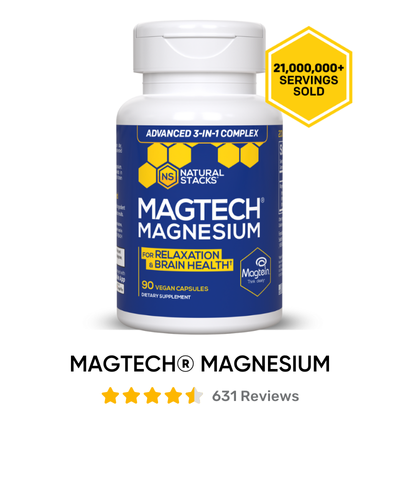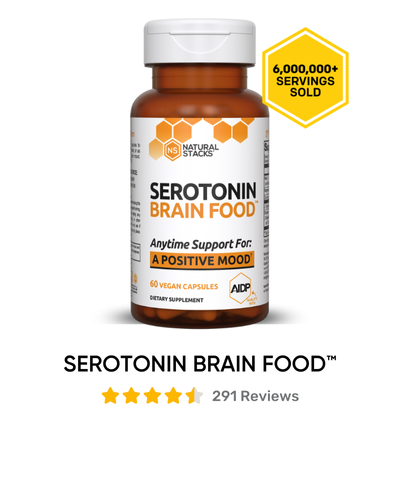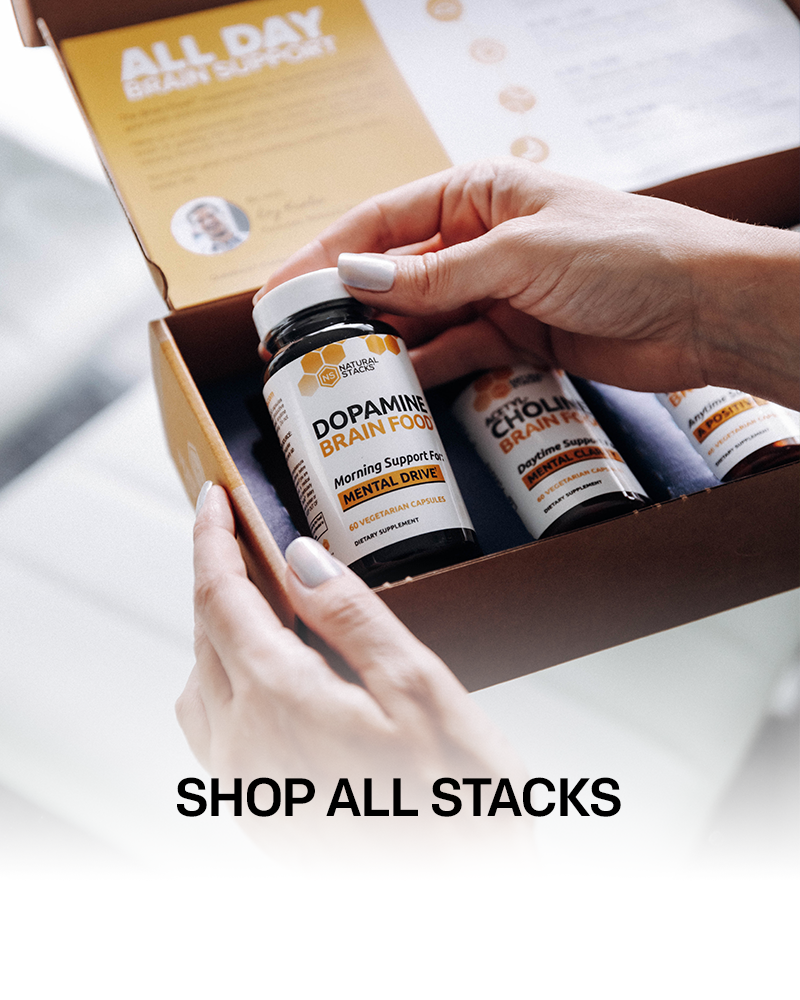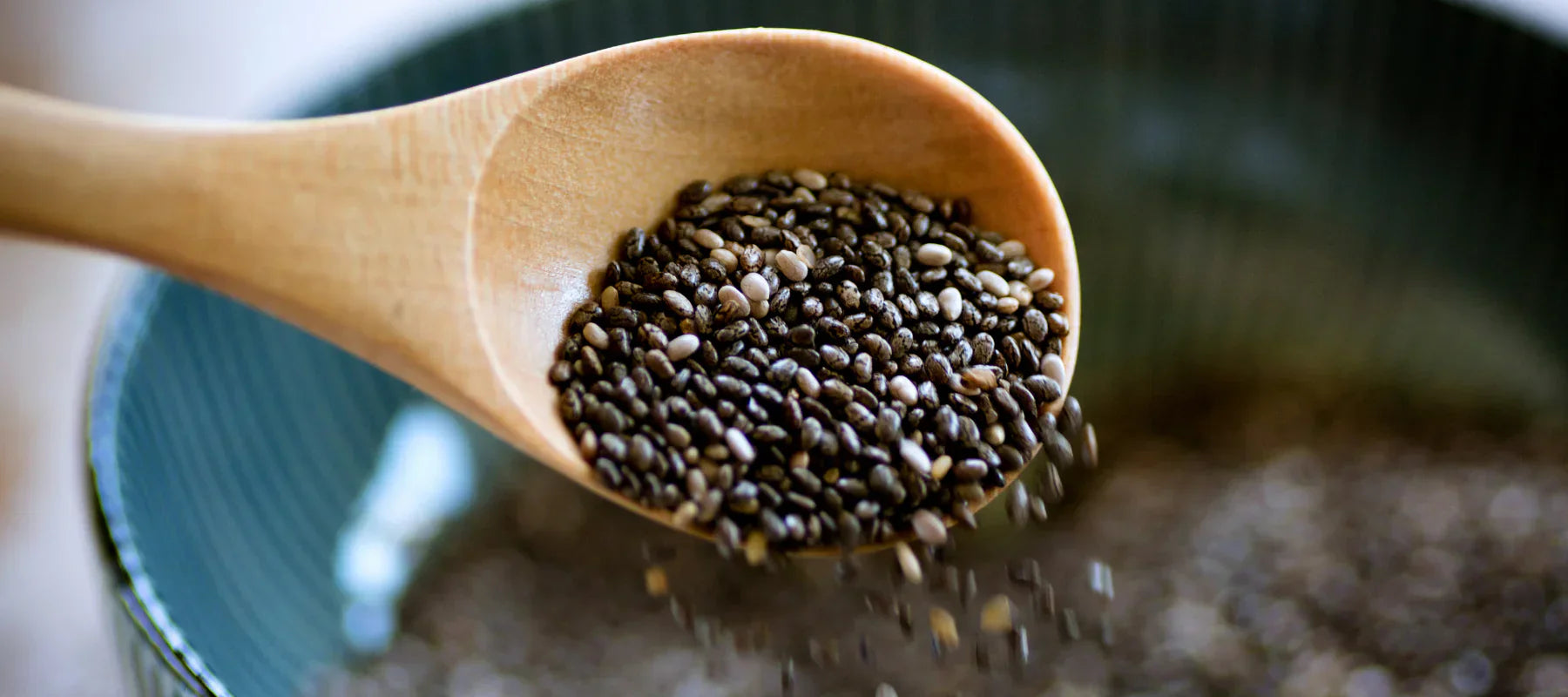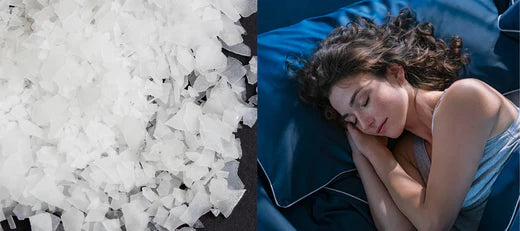67 Ways To Make 2017 Your Most Productive Year Ever

There are two groups of people when it comes to New Year's Resolutions.
The first group says, "The New Year isn't a big deal... just start today blah blah blah."
And the second group uses the opportunity to reflect, optimize and improve their life.
I'll let you guess what group we belong to!
That's why we put together this guide to help you make 2017 the most productive year of your life.
From morning to night, and everything in between, we've got you covered with biohacks, lifehacks and optimization strategies.
We've even have tips for while you sleep.
The options provided are meant to be entry points. Find one that you'd like to try, set a test, experiment and then continue learning and improving for optimal results.
Where we can we've linked out to some of the best resources on the web for the topic.
If you have anything more to add or questions, just leave a comment and we'll work it back into the post.

Morning Routine
Cold showers
Cold showers provide an immediate dopamine and norepinephrine hit. There are tons of physiological benefits, but there’s something powerful about starting your day with the psychological boost from doing something so uncomfortable (and something you know most people wouldn’t have the toughness to willingly do).
We discussed the benefits of cold exposure here.
Skip breakfast (intermittent fasting)
Skipping breakfast helps improve mental clarity and focus through the morning hours. Skipping the office pastries will keep you dialed in by controlling blood sugar and insulin for stable energy levels.
Learn more about the brain boosting effects of IF on this blog post.
Bulletproof Coffee
Upgrade and prolong your morning fast by adding grass-fed butter or ghee and some MCT oil to your coffee for fuel that keeps your brain running at full throttle, crushes your hunger, and "turns the world from black and white to color".

For most people, 1 TBSP butter or ghee and 1 tsp MCT Oil per 12-16oz coffee is a good ratio to start with. You can always adjust from there to your own taste.
PRO TIP: Be sure to use a blender to avoid coffee with an oil slick on top. This will ruin your experience.
Nootropics
Also called smart drugs, nootropics are compounds that lead to improved cognitive performance.
The world’s #1 nootropic is caffeine.
If you’ve experienced the brain boosting effects of coffee, then you know the sensation we’re talking about.
Now, imagine increasing that impact 5-10X with other natural herbs and extracts that can increase focus, boost memory, and increase productivity?
Our 5 favorite Nootropics for enhanced cognitive performance:
- CILTEP - This combination of naturally occurring herb forskolin + artichoke extract boosts focus and memory
- MagTech - Mineral magnesium-l-threonate increases synapse density for improved connections between brain cells and lowers brain age by 9 years [1]
- Dopamine Brain Food - This combination of amino acids, vitamins and minerals found in everyday foods provide the precursors for the neurotransmitter dopamine, giving you all day motivation to get shit done
- MycoMIND - lion’s mane mushroom boosts nerve growth factor 500% - who doesn’t want more brain cells
- Smart Caffeine - because coffee doesn’t fit in your pocket. This combination of L-Theanine (from tea) and Caffeine (from coffee) has been shown to increase mental alertness, reduce distractions, and prevent caffeine’s sleep disruptions [2, 3, 4, 5, 6]
There are also a number of synthetic nootropic compounds that are popular for their cognitive benefits.
NEXUS is a nootropic stack containing aniracetam, CDP choline, phosphatidylserine, and pycnogenol.
Numerous other biohackers like Dave Asprey have talked about modafinil and its benefits.
Addition by Subtraction: Things To Avoid
Don’t check social media first thing!
Whether it’s news around the world, someone ranting on Facebook, or a bunch of cat photos on Instagram models there’s no better way to derail your day than by jumping on social media first thing in the morning.
You should also install FB Feed Eradicator.
Cut out the sugar
If you’re doing an energy drink, adding sweetener to your coffee, or eating candy you’re spiking your glucose levels which is going to lead to a crash.
Unless you're a hummingbird or an Elf, ditch the sugar.

Disable Notifications
If it’s uber important, people know to call me. Why? Because that’s the ONLY notification that I receive on my phone. Otherwise, it’s not a priority and I’ll get to it when I can.
You’ll be amazed at how much mental capacity this frees up. Notifications are constantly fighting for our attention (just try turning them off on the Facebook app) and are the easiest way to get sidetracked.
Now I’m not saying give up on social media or anything like that.
Actually you should follow Natural Stacks on Facebook, Twitter, and Instagram.
But interaction like social media has a time and place. It’s not when you’re trying to get actual, real work done.
Productivity / Life
"Success List" NOT "To-Do List"
To-do lists seem like a great idea, but really you’re just creating busy work for yourself. You’ll obsess with crossing things off instead of working on the most important items.
How can you be in a creative state when you’re focused on so many different things?
Instead steal a tactic from Gary W. Keller and Jay Papasan’s book The ONE THING.
Build a success list and drill down ONE single item to work on.
Figure out what items hit your pareto principle (80/20 rule) and make it happen!
Find a group:
Arnold said he’s not a self-made man. You’ll be amazed at what you can accomplish when you find / work with self- minded individuals. We all need help along the way.
There are a few different ways to accomplish this.
- Mentorship: Find someone who’s doing / living exactly how you want to and offer to help them. This is challenging but rewarding. You should already have a few existing skills.
- Mastermind: These are groups of your peers all working towards a similar goal. When you can share resources and information regarding similar problems, you’ll be amazed at how much you can get done.
- Private groups: If you’re still in the idea phase or figuring it out, it’s worth joining a private membership community around that interest. It’s here where secrets are shared and you’ll find likeminded people.
Without surrounding yourself in-person or online with similar people with similar goals, you’ll never be as productive as you want to be.
Nourish your brain with focus-boosting music:
Find yourself skipping through Spotify playlists?
Well there’s a reason for that… your brain IS ON DRUGS.
Try using focus boosting music without lyrics like….
- Binaural beats (playlists on Spotify/Pandora)
- Brain FM (<--- Brain Fm co-founders were great podcast guests)
- White noise (google, YouTube, Spotify)
- Classical music like Bach or Beethoven, etc

Batch Repetitive Tasks -
One of the biggest productivity zappers is repeating a simple task throughout the day. We can optimize our productivity by “batching” these efforts into a concentrated window.
Some example activities to “batch” include email, sales phone calls, or returning ANY phone calls.
Rather than stopping what you’re doing and addressing these one by one all day long, you can consolidate these actions into dedicated blocks of time.
Instead dedicate:
- 1 hour in the morning and evening for email.
- 1 hour in the morning and/or 1 hour in the afternoon for phone calls
Most people only require 20-30 minutes with this strategy - freeing up lots of extra time for high-value activities that help you move the needle for your mission.
Use Pomodoro Timers:
Have a project or task that you’ve been procrastinating on for a long period of time? Then it’s time for a pomodoro timer and kick your butt into max productivity mode.
And no we’re not talking about the sauce!
What’s a pomodoro?
It’s a time management method used to break down work into smaller intervals.
You can use different time constraints but primarily what I like to recommend is 25 minutes. For some reason the brain just likes to think that 30 minutes is too long.
To get started you can buy a timer online or you can install an APP like this one for iOS or this one for web-based use or Droid phones.
Then pick the one thing that’s been lagging on your success list and boom! Go after it.
After the 25 minute session ends, it’s a hard stop.
That means get up, move around, grab some Smart Caffeine and then get ready for another session!
You’ll find that by breaking big projects up into smaller intervals you’ll get more done at a faster rate than ever before.
It’s either "HELL YES" or "No Thank You"
This is the approach that you should take on tasks, projects, dates, events, weddings, and everything else.
Why?
You’re spending too much of your time on things that are adding little to no value to your life. These things suck up so much of your mental energy without giving back. It’s like a vampire shiiit.
Does this mean you turn everything down and become a bedroom hobbit? No, absolutely not. It means quite the opposite actually.
You’ll only be doing things that are a “HELL YES”. You’ll be amazed at the boost in mental energy and positivity you’ll have by doing things that only make you really excited.
You might be worried about that your reputation may suffer from turning things down, but it’s quite the opposite. People will respect your decision and value time spent together even more.
Mental

Get your float on!
Sensory deprivation pods, or float tanks, are a great resource for stress relief and mental health.
Entire books could (and have) be written on the benefits of float tanks, so we’ll keep this short.
Float tanks are designed to remove all sensory input so you can be alone with your mind.
Nearly 1,000 pounds of epsom salts are dissolved in 10-12 inches of skin-temperature water so you literally float in the pods. There is no sensation of gravity, nor do you “feel” the water since it matches your skin’s temperature.
When closed the darkness and absence of sound inside the pod complete the sensory deprivation experience.
There are also tremendous benefits from the large amount magnesium we absorb while soaking in the epsom salts.
For a deeper dive, check out these podcasts we’ve recorded with Float Tank Pioneers:
- Sean McCormick: Floating, Theta States, and Recovery
- Kevin Johnson: Floating and Cognition
- Shane Stott: Floating, Time Management, Boundaries, and Happiness
Try to meditate
Neuroscientists have shown that humans lose 10-25% structural density in our temporal lobes (associated with behavior, food appreciation, and balance) after the age of 65.
This is consistent across the board - except for people who are lifelong meditators. These people are spared this structural loss.
You don’t have to become a Buddhist Monk to reap the benefits of meditation.
Some mindfulness guides say you only need to take a single mindful breathe each day to get started.
From there, spend 1-5 minutes each morning concentrating on nothing but your breathing. Or set your intentions for that day while sitting quietly and focusing on deep diaphragmatic breathing.
Or, put this practice at the end of your day and combine it with a journaling exercise where you list the best and worst things that happened that day, along with your goals for the next day.
You can also achieve these results with neurofeedback.
Neurofeedback is a way of training our brain to produce the brain wave environment that is most conducive to our ideal balance. (This is different for every individual)
Think of it like a slap on the wrist - or a pat on the back - to reinforce our brains behaviors.
10-12 weeks of direct neurofeedback training has been shown to provide the same benefit as a lifetime of meditation.
You can learn more about neurofeedback and my experiments with it HERE.
Many people struggle to begin a meditation practice. Here a simple trick to help you overcome that barrier.
Remove yourself from your meditation practices -
I’m borrowing this from Tim Ferriss’ latest book Tools Of Titans. In the book, Tim mentions a form of meditation called loving-kindness. All you need is 10 seconds.
Identify two people you know, and wish them happiness. That’s it. For 10 seconds, focus on someone else and wish happiness for them.
That’s the basic version of this exercise. You can expand to be done every hour during the work day (8 repetitions for a total of 80 seconds) or do a single concentration burst of 3-5 minutes.
Express gratitude
I stole this idea from Seth Godin, but go out right now and write a thank you note to someone you love.
Gratitude Journaling -
It’s hard to have a bad day when you wake up and count your blessings.
Conversely, if pressed to list your most troubling issues, it’s likely that most are trivial, “1st-world problems” - not REAL problems like finding shelter for the night or defeating a terminal illness.
So if you have both eyes, can read, have 2 hands, 2 feet and your hearing then you’ve your first 5 things for which to be grateful on Day 1 of your journal.
Physical:
Avoid the most common fitness failures by following these 3 simple guidelines:
Look, you’re doing this to ENHANCE your life. You should enjoy it! And if you enjoy it, you’ll be more consistent.

If you hate running, don’t do it. There are other ways to achieve the same result. If you hate lifting weights, pick a more enjoyable modality to strengthen your mind and body.
The next step is to define your goals -
If you go to the gym just to “go to the gym” you’re probably never going to get much done - nor will you get much pleasure from your activity.
Instead, set a goal and then test your abilities.
This is proven to increase outcome and enrichment.
There’s just something about putting your ego - your reputation - on the line that brings out the best is all of us.
We’re more engaged, more consistent, we’re more likely to push through excuses and overcome obstacles. We learn more about ourselves and our pursuits.
See, this already sounds more fun than “just going to the gym”!
Some ideas to get you started:
- I want to run a tough mudder.
- I want to complete a ½ marathon
- I want climb ____ mountain
- I want to do SEALFit
- I want to enter a local CrossFit competition
- I want to be cool and awesome like Natural Stacks co-founder Ben Hebert (pictured below)
- Etc etc etc
Then test yourself.
You’ll find it way more rewarding to do this rather than treating the gym or exercise as something “you have to do”.
One side note:
Unless you plan on getting involved in a sport where weight classes matter (like boxing or powerlifting) I wouldn’t make your goal about a specific weight.
Instead, make it about a performance or experience. You’ll cherish and remember those more later in life anyway.
Besides, form follows function. (Write that down, that’s one of our 69 biohacks!) I’ll never forget this quote from my college Anatomy course. In nature, chemistry, anatomy, you name it...form follows function.
If you consistently run 20 miles a day, your body will resemble the body of a person who runs 3/4 of a marathon every day. Likewise, if you sit in car, in chair, and on a couch for 12 hours a day for 20 years, your body will assume that form...
Focus on experience and performance and the “look” or “form” will fall into place.
Recover -
Exercise is merely a stimulus for our bodies to change in order to deal with the deal with the demands imposed by that exercise.
It’s about adaption
And adaptation only occurs when our bodies get a break from those stimuli.
It is then that we build ourselves back up - bigger, stronger, faster to better handle that stressor (or stressors) the next time we encounter it.
Aim to spend equal parts recovering:taxing your body.
Train for 15 minutes? Recover for 15 minutes.
Train for an hour? Spend an hour on recovery.
A few of our favorite recovery and restorative methods include:
- Foam rolling
- Lacrosse, medicine or tennis ball on trigger points
- Massage
- Mobility drills
- Stretching
- Recovery & Compression Clothing (like 2XU)
- Walking (a reset for movement patterns)
- Saunas
Speaking of saunas…
The research is clear, saunas can improve health, recovery, and performance.
One Polish study found that 3-weeks of sauna usage improved lipid profiles as much as exercise.
"The positive effect of sauna on lipid profile is similar to the effect that can be obtained through a moderate-intensity physical exercise."
Here's what the test subjects experienced:
- Lower total cholesterol
- Lower LDL (bad) cholesterol
- Increases in blood plasma levels (acute decreases from each session due to perspiration, led to this adaptive increase over 3 weeks)
- Significant decline in serum triaglycerols
- Increased HDL - good - cholesterol (although not statistically significant)
Here’s the exact protocol so you can reap the same benefits:
- 15 Minutes at 90 degrees C +/- 2 degrees (194 degrees F) and 5-16% humidity.
- 2 Minute cool-down
- 15 Minutes at 90 degrees C +/- 2 degrees (194 degrees F) and 5-16% humidity.
- 2 Minute cool-down
- 15 Minutes at 90 degrees C +/- 2 degrees (194 degrees F) and 5-16% humidity.
- 2 Minute cool-down. [cite]
Repeat this protocol daily or every other day. Even as little 2-3 sessions per week can provide benefits.
Infrared (not the steamy Finnish type) - specifically FAR infrared saunas significantly reduce heart rate after endurance training sessions, reducing recovery time and improves power output in subsequent performances. [cite]
“The human body will not devote resources to healing when it thinks it’s being chased by a tiger” - Dr. Raleigh Duncan
Night Time

TURN OFF THE SCREENS. BLUE LIGHT IS KILLING YOU.
Blue light is light at the shortest end of the visible spectrum of light. Since the wavelengths are shorter, their frequency - or energy - is higher. These wavelengths are also the ones present in mid-day day.
Because of this, blue light is a signal to our bodies that it is time to be awake and alert.
It also downregulates (stops) the production of melatonin, the hormone that signals our brain that it's time for bed.
This is great if you’re a hunter on the plains at 2pm 3,000 years ago.
This not great if you’re a modern human staring at computer, phone, and TV screens for hours after the sun has gone down.
In fact, those three screens (computer, phone, and TV) account for humans top sources of blue light today. More than 60% of Americans spend 6 hours (or more) each day looking at a digital device. And much of that exposure comes after dark.
To improve your sleep and help restore your natural circadian cycle (your body’s biological clock), limit blue light exposure - especially after sunset.
Ways to limit it:
- F.lux (free download for your computer that syncs to local time to reduce blue light after sunset)
- Blue blocker screens from Zentech (I have one on my laptop and my cell phone)
- Drift TV (blue blocker for your TV)
- Night mode on iPhones
- LED lights in your house (red in the morning, blue (white) at midday, red after sunset)
See more on sleep and blue light here from Sleep researcher Ryan Hurd on the OPP
While we’re talking about using light to improve sleep and increase energy, let’s look a cool new piece of technology that can help us beat jet lag and avoid the winter blues…
Charge Yourself with the HumanCharger
This device looks like an iPod, but the headphones are actually bright white LED lights that blast white and blue light onto the photoreceptors inside your ears to make your body think it is daytime.
The “sessions” last 12 minutes and can be done while you fly, work, workout, and otherwise refuse to interrupt your busy life.
- To avoid jet lag, the HumanCharger comes with a free app that automatically tells you when to use the lights before and after your flight to help your body adjust to a new time zone.
- To beat the winter blues, the unit can be used on gray days to stimulate UV exposure or semi-regularly around sunset since it gets dark between 4-6pm during those months. (Seasonal Affective Disorder or Winter Blues is caused by a lack of sun exposure and is worsened as distance from the equator increases.)
GET BETTER SLEEP:

Most people need a nighttime overhaul. In the health and fitness communities, this has become known as “sleep hygiene”.
Develop a Bedtime Routine
It’s about programming and conditioning. People who read before bed, often fall asleep when they read at other times of the day. This is conditioning - their brains and bodies have been programmed to prepare for sleep.
Here are a few ideas... a cup of hot tea and a book by the fire. Maybe it’s a walk or meditation practice to clear your head or a hot shower with calming essential oils like lavender or eucalyptus to stimulate the parasympathetic nervous system (responsible for “rest and digest” activities)
Your pre-bed routine can (and should be unique to your needs, habits, and likes. That’s the only way you’ll be consistent with it.
Make it Cold - Sleep studies have shown that the ideal sleeping temperature is between 62-68 degrees Fahrenheit. Your sleep environment should be chilly, like a cave.
Speaking of caves, SLEEP IN ABSOLUTE DARKNESS.
Get blackout curtains, put electrical tape over blinking smoke detectors, and remove, unplug or cover alarm clocks with LED displays.
In a hotel room, you can even roll up a towel and put it under the door to block light from hallway and unplug the wireless router to reduce wi-fi exposure while you sleep.
And you should ALWAYS sleep with your cell phone on airplane mode and keep it outside of arm reach.
Some people prefer absolute quiet when they sleep and other like a little ambient noise. There are ancestral researchers who support the idea that our tribes always had fires cracking and someone keeping watch.
So if you want a little noise, try a white noise machine or playlist.
Brain FM also has great sleep-specific music.
The final part of your sleep hygiene and pre-bed routine should include supplements that promote calm, relaxation, and more restorative sleep.
Magnesium is a mineral that is involved in more than 300 biological processes. It is crucial for sleep and is one of the best sleep-supporting supplements you can take.
MagTech is a premium magnesium complex that contains 3 forms of magnesium to support relaxation, restoration and sleep. 1 form, magnesium-l-threonate, is the only form that can cross the blood-brain barrier. This means is actually increases brain concentrations of magnesium and has been shown to increase synapse density and lower brain age 9 years. [source]
Resistant Starches like those in Prebiotic+, special carbohydrates that are not digested, have also been shown improve sleep quality.
Unlike normal carbohydrates, these starches resist digestion in the stomach (hence their name) and remain unchanged until they reach our gut. There, they are digested by the good bacteria (PREbiotics) in our gut and produce butyric acid. Butyric acid is a short chain fatty acid found in butter that is a precursor to GABA, our body’s inhibitory neurotransmitter that promotes calm, relaxation and sleep.
Finally, collagen protein has been recommended by many as a sleep aid.
- Mix collagen protein into your Prebiotic+ before bed
- Greek Yogurt (or your favorite yogurt) with a bit of honey (honey keeps blood sugar stable through the night - preventing blood sugar drops)
SLEEP TRACKING:
Tracking your sleep will help improve your sleep. But the real key here is that sleep tracking also helps you measure whether or not your OTHER hacks are positively impacting your life and performance.
“Sleep monitoring is the best way to track health and the measure the effectiveness of your other ‘hacks’” - Steve Fowkes
There are many options for sleep trackers. Here are a few that you can try:
- Sleep Cycle (App for smartphone)
- Fitbit or other wearable fitness trackers
- Oura Ring (sleep and recovery tracking ring)
- Beddit
- Zeo
For more biohacks and to get access to our new course on How to Annihilate Procrastination, sign up for our email list here.


